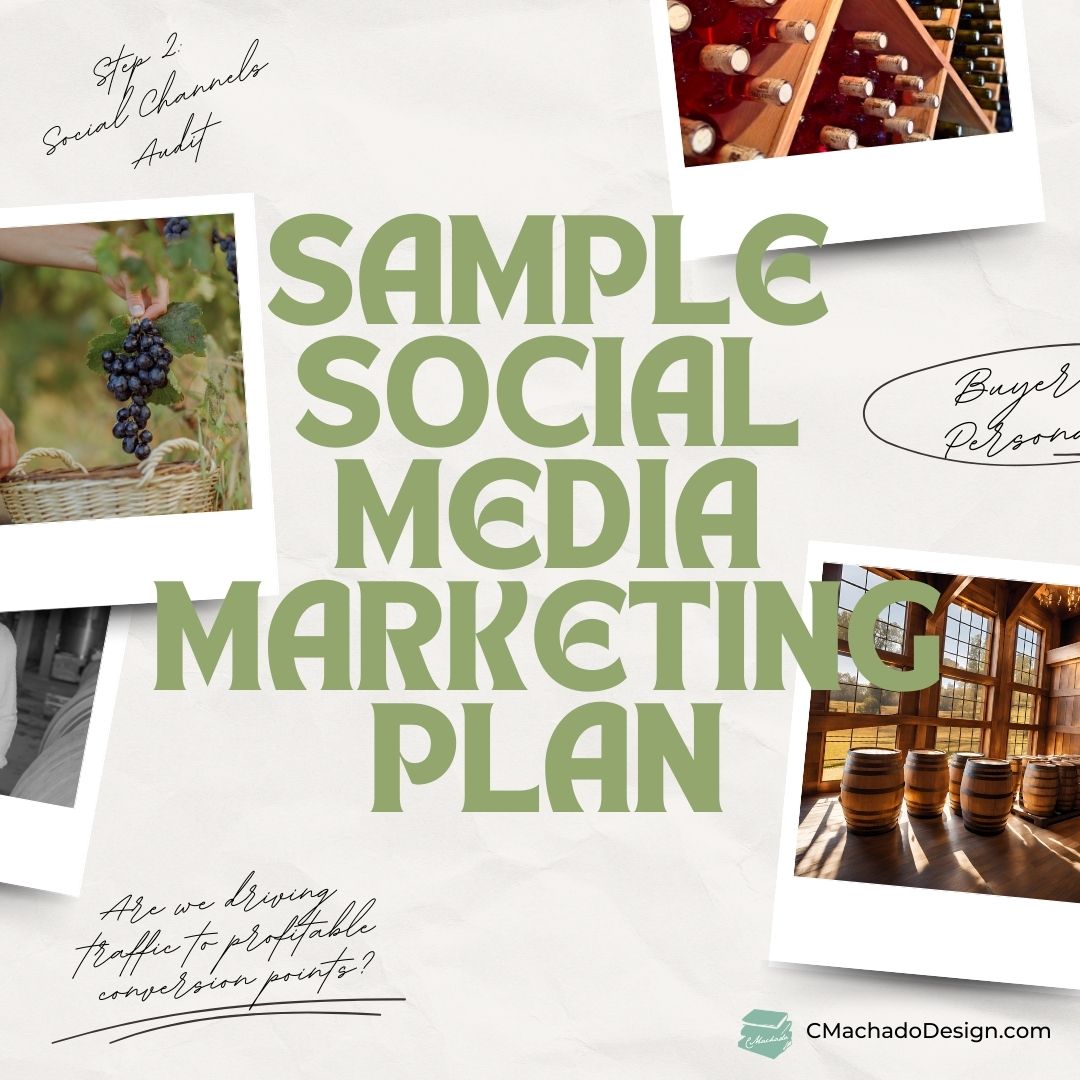If you are looking to increase your business’ social media game, there’s a lot more to it than just taking a quick cell phone video and posting it on TikTok. You cannot just tell your intern/niece/kid’s babysitter down the street to “make us go viral.”
I actually had one winery owner tell me that she needed to hire a teenager to “do our social media because they just know these things.” Not only is age discrimination based hiring illegal, but running an account for personal use and managing channels for a business are quite different. There are probably more considerations that need to be taken into account than you realize. You are going to need a solid marketing plan in place before you ever press “Post.”
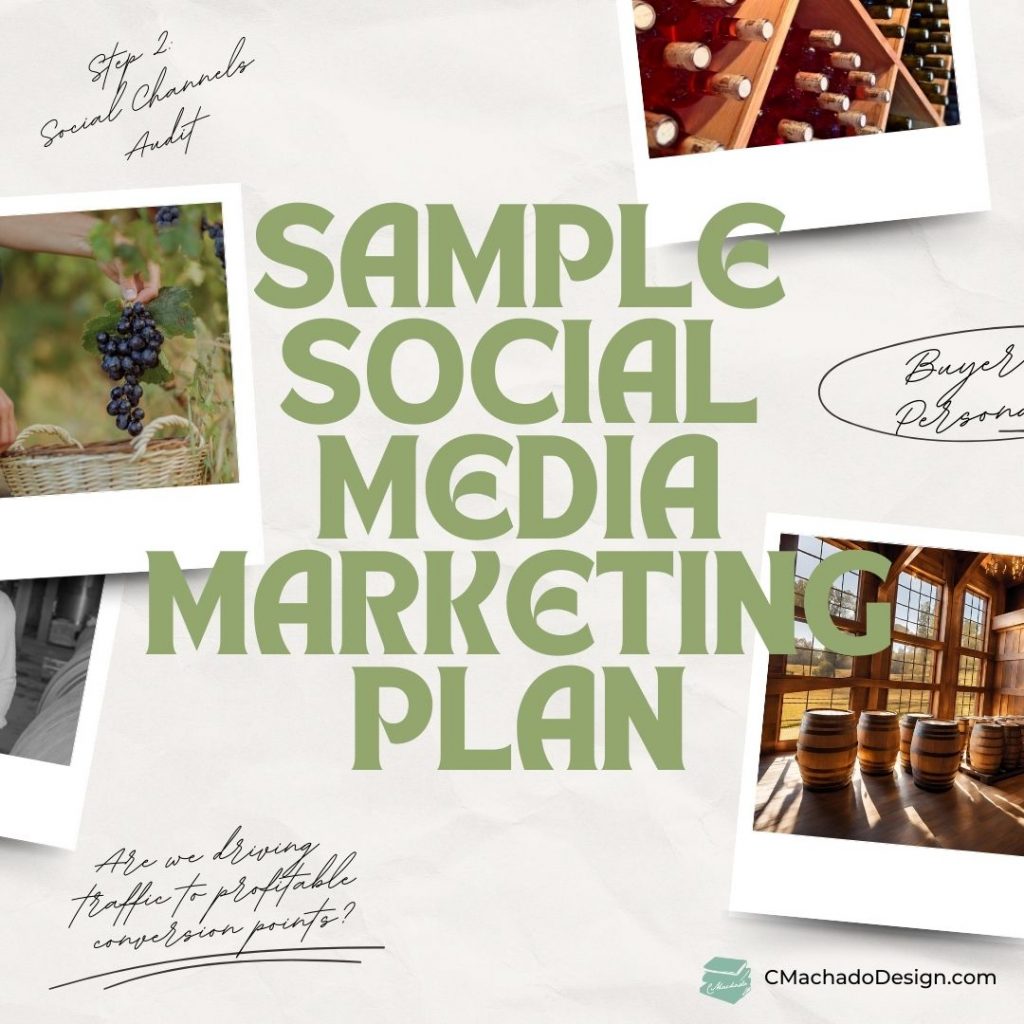
Step 1: Make sure you have a clear vision of your company’s mission. All of your owned media should reflect this mission and your company’s values to your customers.
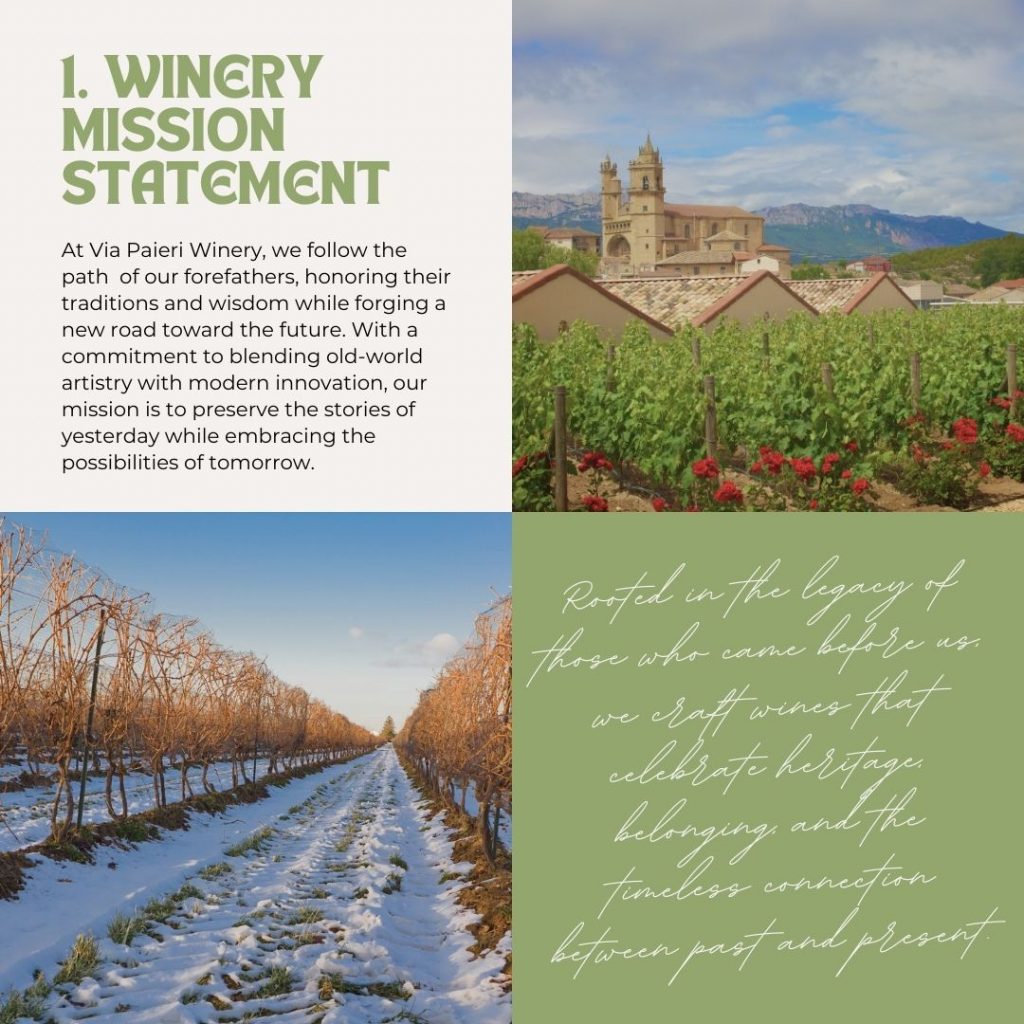
Step 2: Before starting any new social media channels, do a self audit online. Is there any bad PR you need to address? Are there any broken buttons on your website? Do any abandoned social media accounts exist somewhere? What is currently working and what is not?

Step 3: Give your social media marketer a clear brand guide. Don’t have one? It’s time to make one. This includes the brand colors, the correct and current logo, style and voice of writing, typography, and anything else that completes the “look” of your brand.
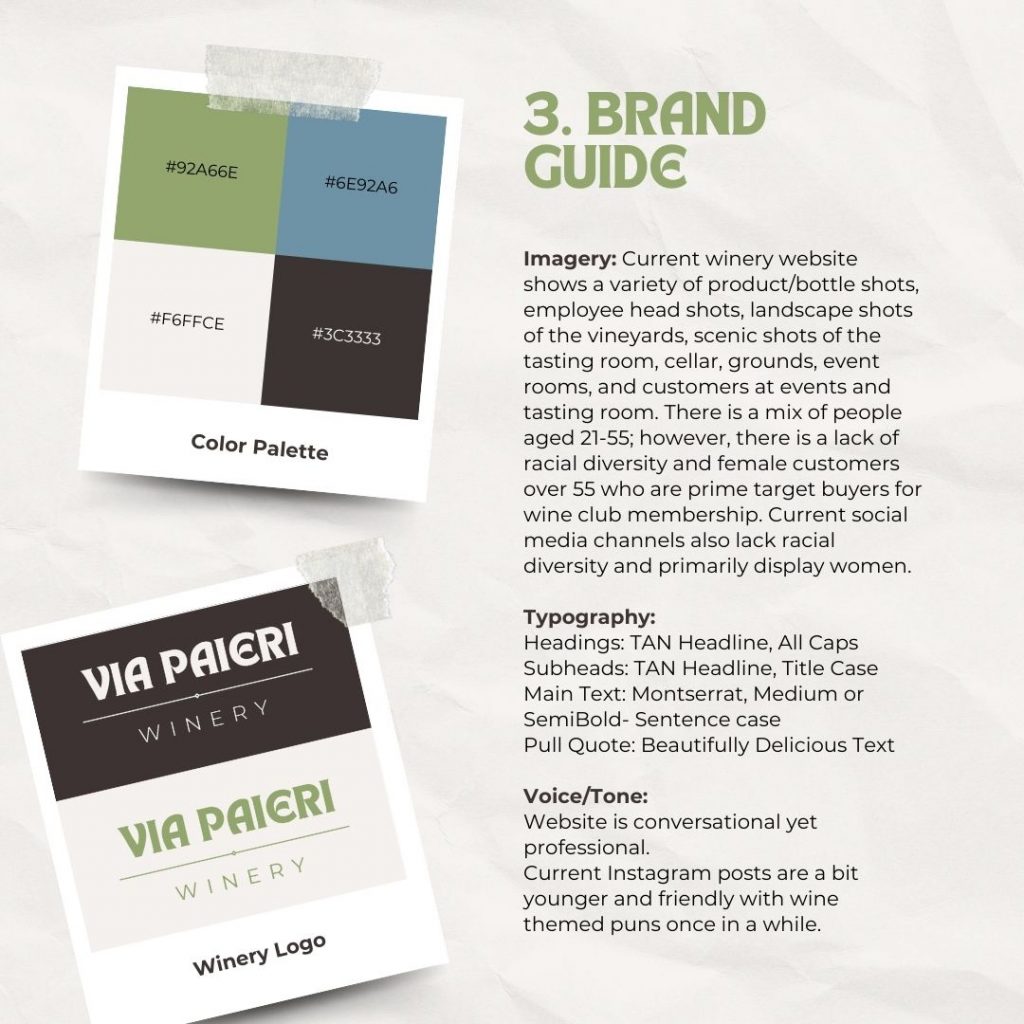
Step 4: Identify all of the current profit centers and revenue streams. Which are the most profitable and which ones need to increase? This can help you narrow down a specific goal for your social media strategy.
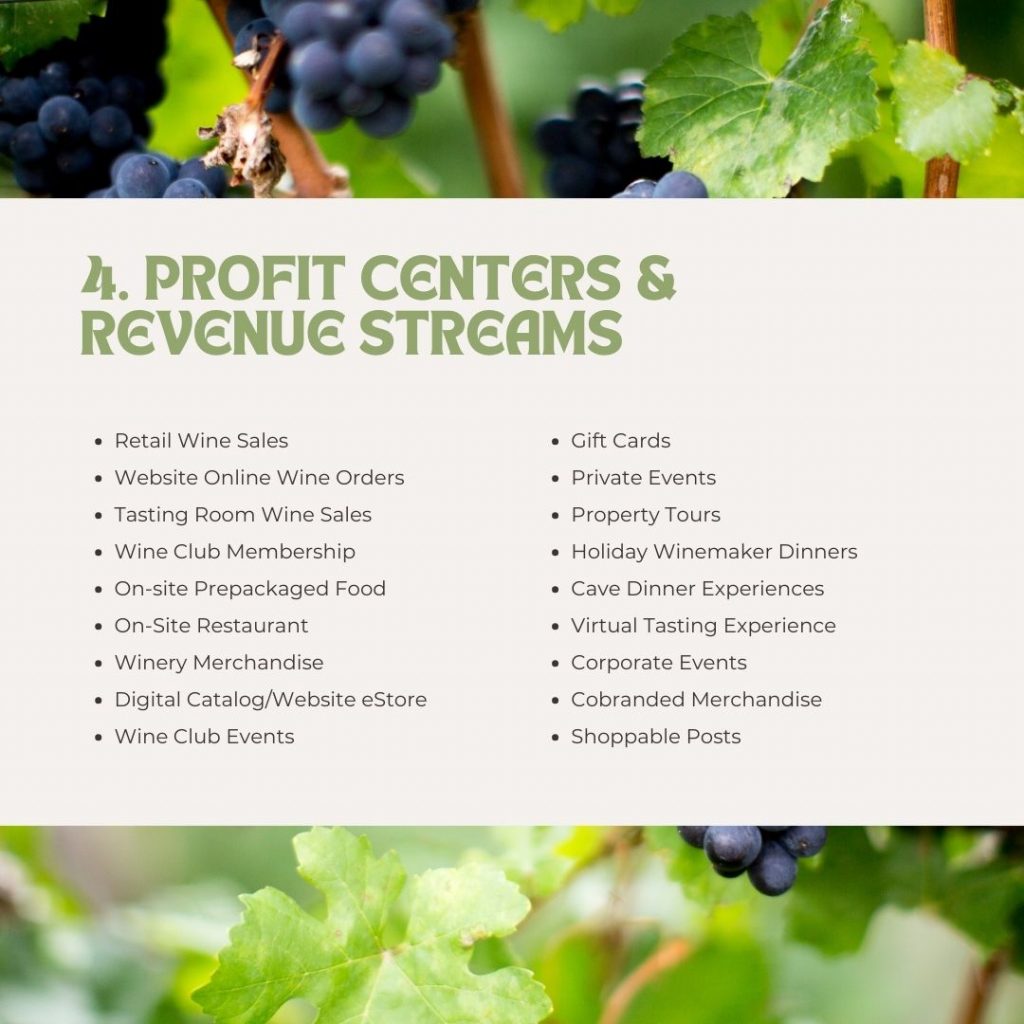
Step 5: From the point of view of a new lead, how easy is it to become a paying customer? A Wine Club Member? What is the call to action and what do you want the customers to do once they arrive at your website?
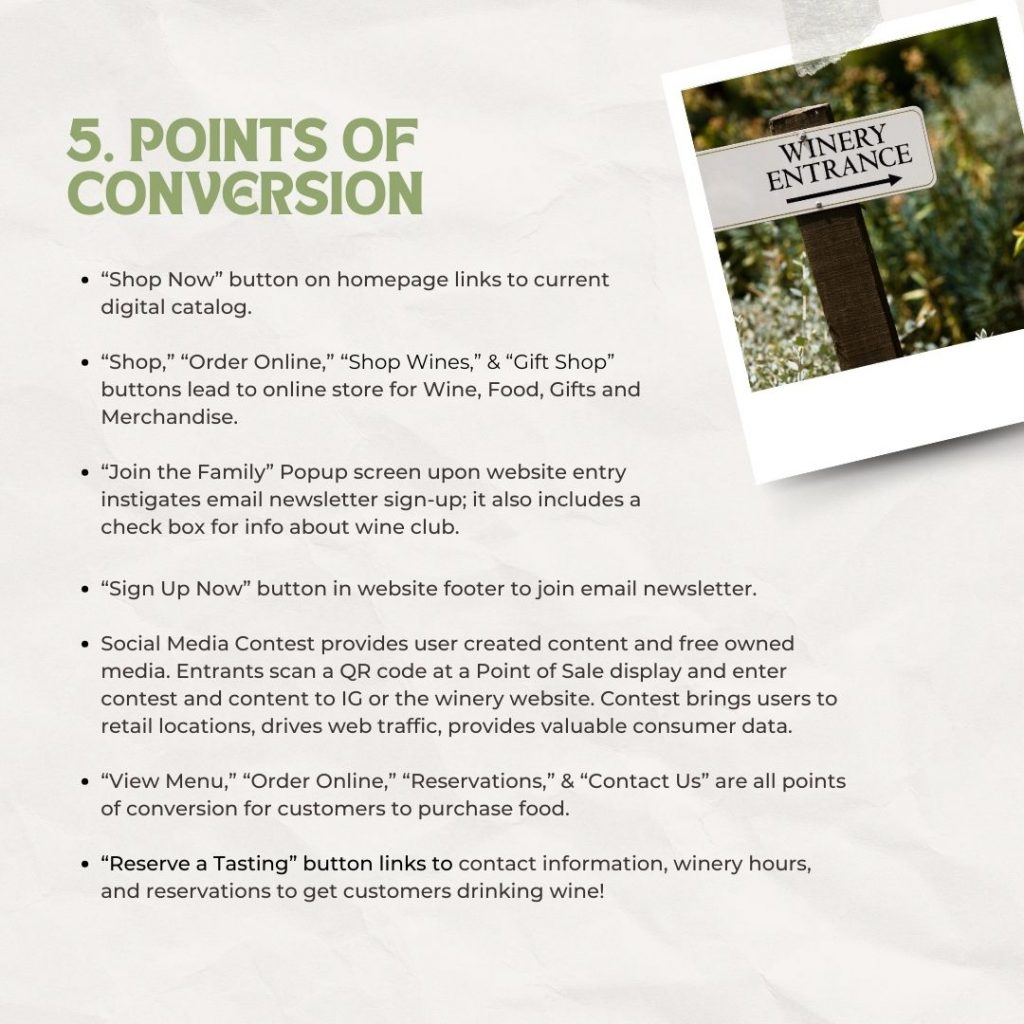
Step 6: Create a specific, measurable, and time based goal for your new social media campaign. Find data to measure the success of your campaign after the designated time period, then adjust the goal or expectations as needed.
I developed this sample social media marketing plan to focus on two specific goals for a winery:
- Drive a 5% monthly increase in web traffic to the winery’s website via YouTube.
- Boost Wine Club memberships by 2% quarterly through Pinterest.

Step 7: Identify who your ideal customer is and then research to see which social media channels that person is mostly likely to be on.
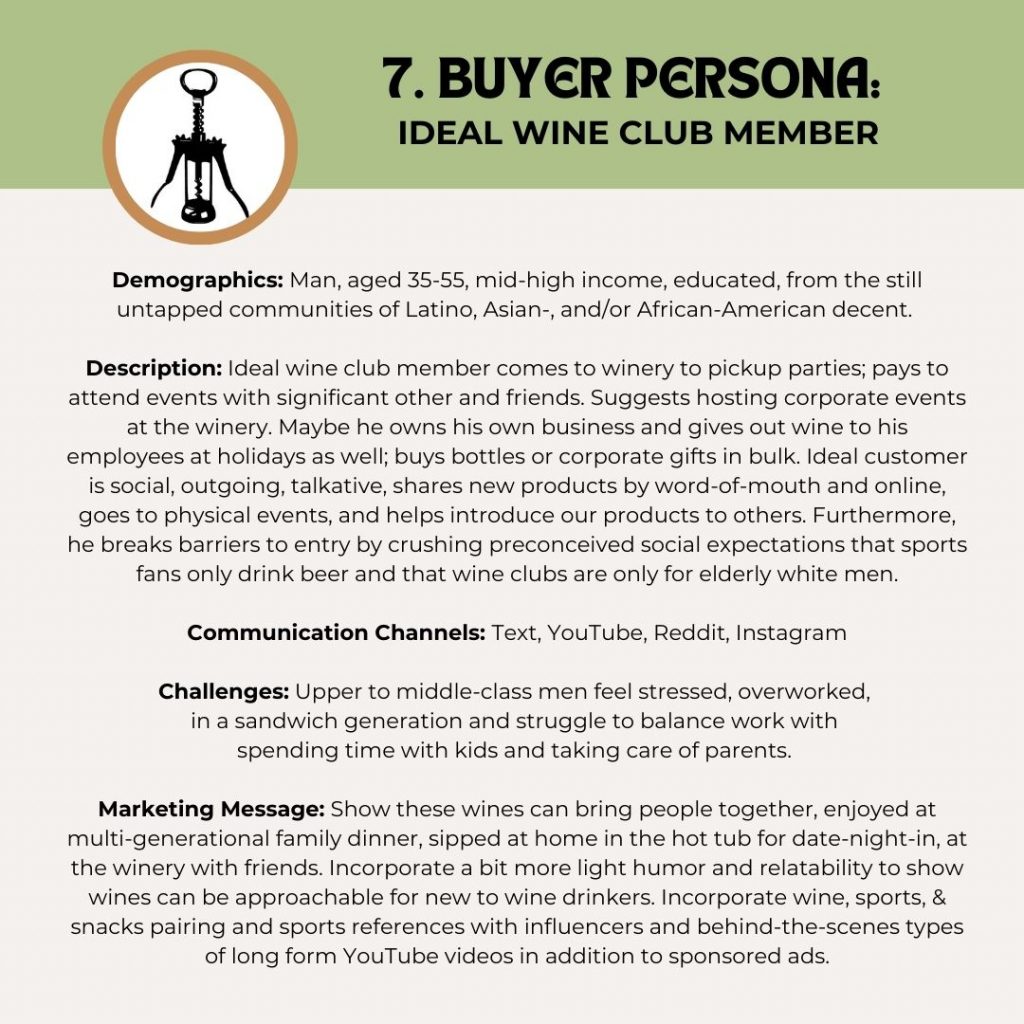
Step 8: If you have the band width, create your second buyer persona.
Pinterest offers wineries a visually appealing platform where Pins have a very long shelf life to grow Wine Club memberships. By sharing high-quality pins featuring wine pairings, seasonal recipes, and exclusive Wine Club offers, wineries can attract a dedicated audience. With Pinterest’s more positive and female demographic, wineries can effectively tap into this audience with high disposable income.
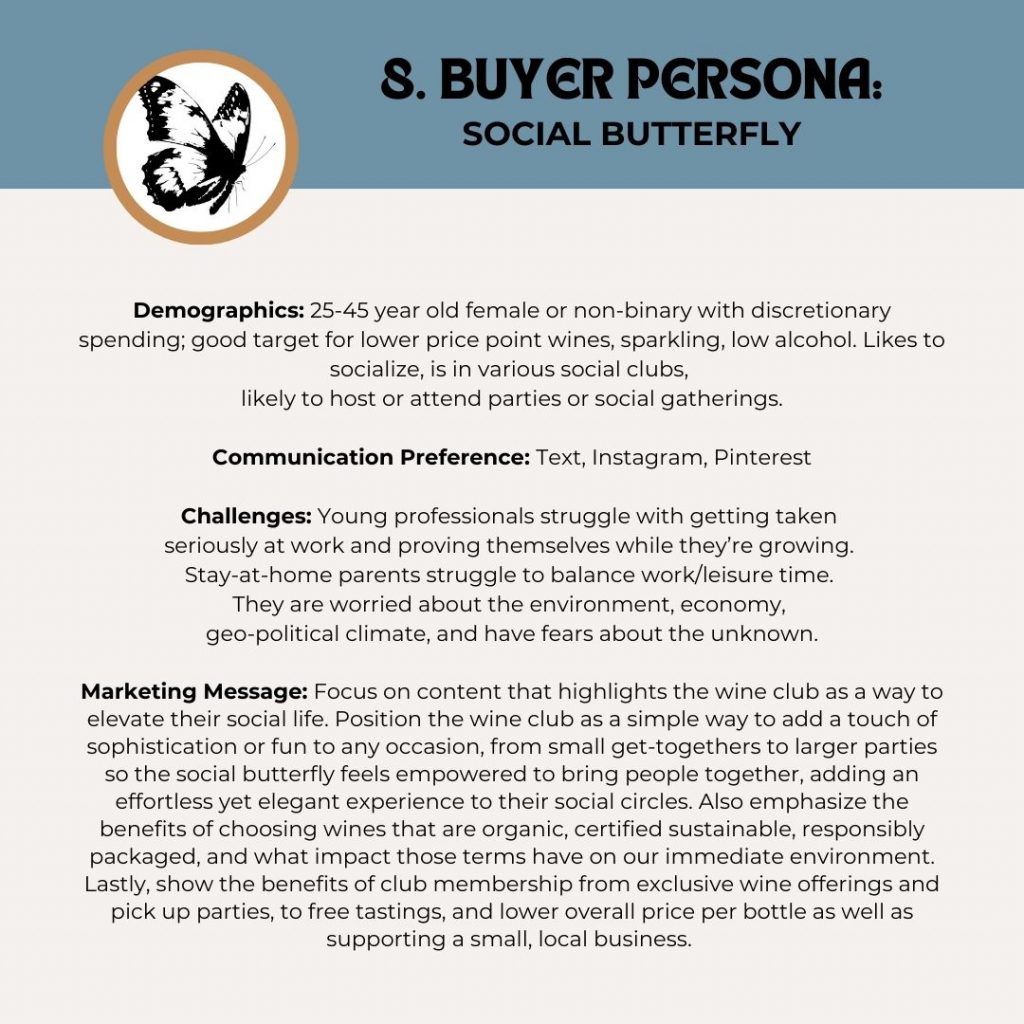
Step 9: Optimizing pins for SEO and maintaining a consistent posting schedule helps generate organic traffic and engagement. In addition, long-tail keyword that are hyper specific will generate less web traffic overall than generic keywords like “wine,” “wine club,” or “wine tasting,” but they will attract the specific people who are interested in exactly what you are offering. These combined strategies on YouTube and Pinterest not only boost brand visibility but also convert followers into loyal customers and club members. Use Google Trends to find out what people are typically searching for at specific times of year in your area.
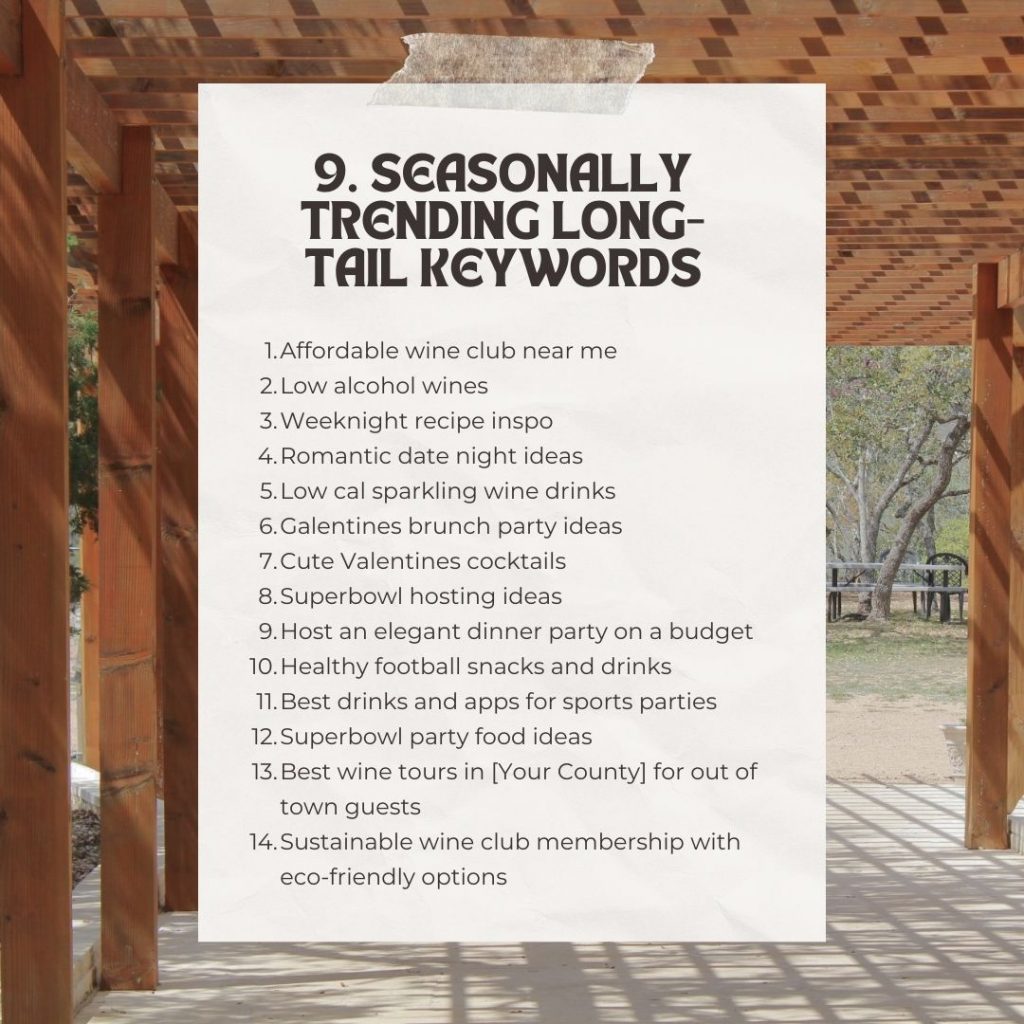
Step 10: Create a detailed plan to hit your stated goals. Start out slow and see how often you can realistically post on your channels. Track your metrics throughout your timeline to access which types of posts are having the most success. You can always ramp up once you know what works for your business.
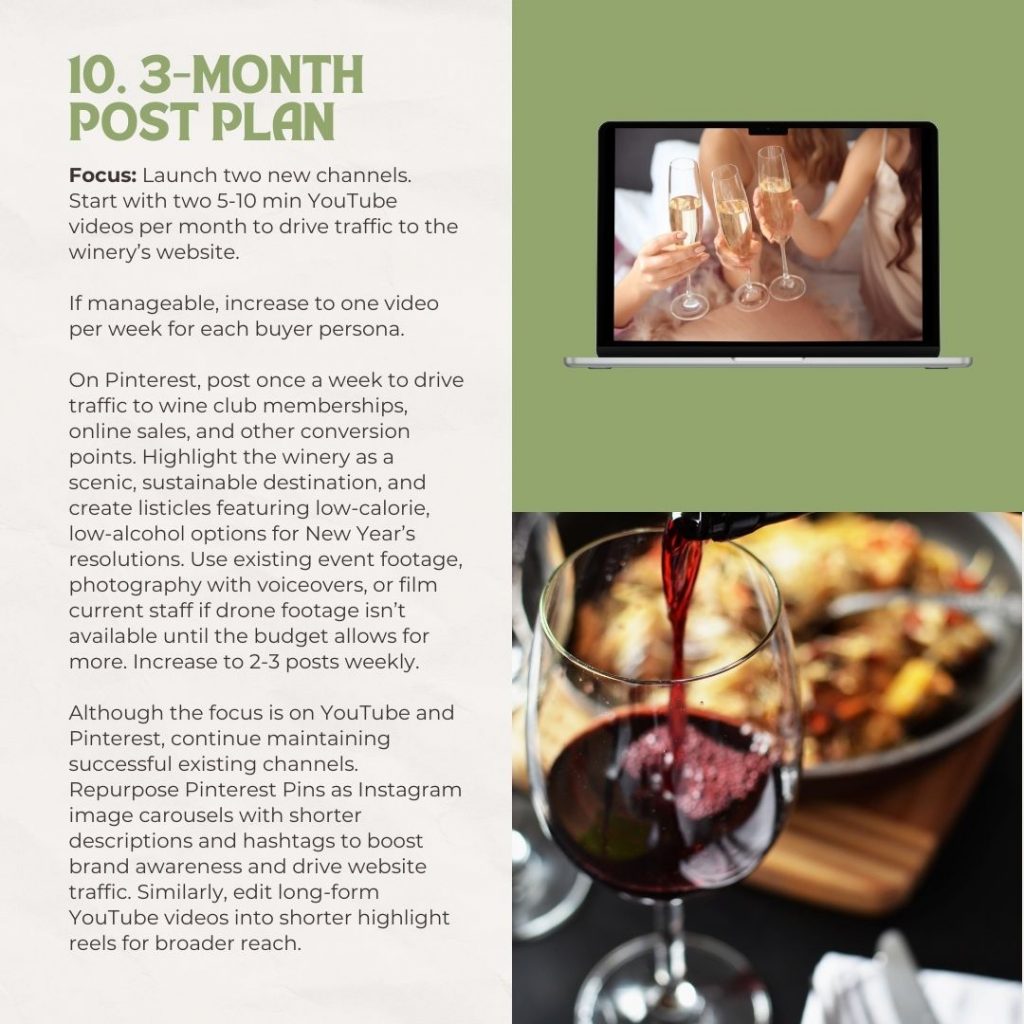
Step 11: Develop a detailed post calendar. It should include the dates, social media channels, type of post, and note any important holidays, events, or notifications specific to your business that need to be communicated.
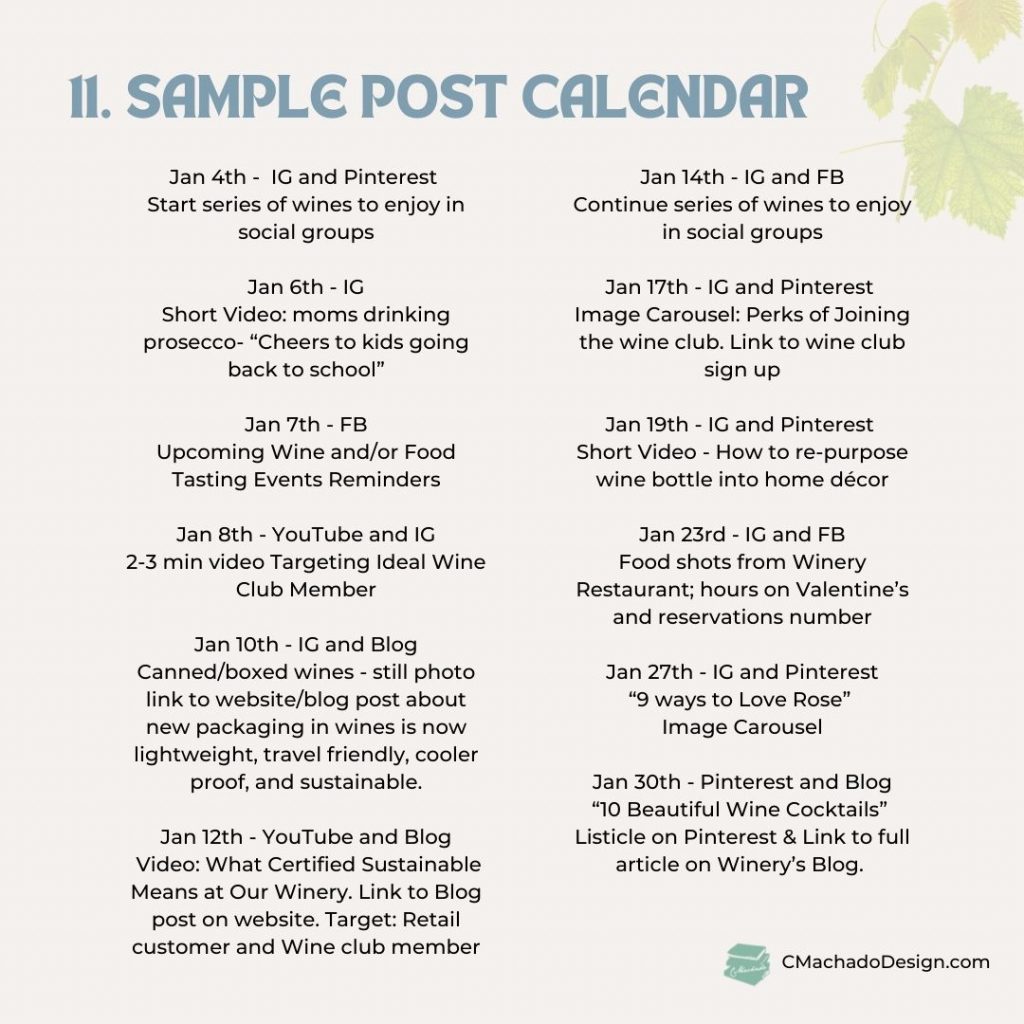
Step 12: Once your campaign has run its course, assess your progress by comparing your results to the goals you set—look at key metrics like website traffic, click-through rates, engagement levels, or conversions tied to Wine Club signups. Use tools like Google Analytics, Pinterest Analytics, or YouTube Studio to evaluate what worked and what didn’t, and identify which channels or content types drove the most meaningful results.
Adjusting Expectations
If you didn’t hit your target, don’t panic—this is a normal part of the process. Marketing is iterative, and early campaigns often serve as learning tools more than anything. The goal is to gather insights, make adjustments, and refine your strategy over time. As long as you’re moving forward with intention and adapting based on real feedback, your marketing is working. You can always reset your goal’s timeline and try again, or change your expectations once you know what reasonable results will look like.
Final Thoughts
A well-crafted social media strategy takes time, experimentation, and patience. The most successful wineries are the ones that stay consistent, stay curious, and stay flexible. Whether you’re just getting started or fine-tuning your approach, remember that each post, insight, and adjustment brings you closer to building a loyal and engaged community around your brand.
If this sample marketing plan aligns with your goals and vision, feel free to download it here and tailor it to suit your business’ unique needs. With a few tweaks and customizations, you can start implementing strategies that will drive more web traffic, increase your Wine Club membership, or just grow your brand. Let me help you turn these strategies into results—because your winery deserves a marketing plan that works.

